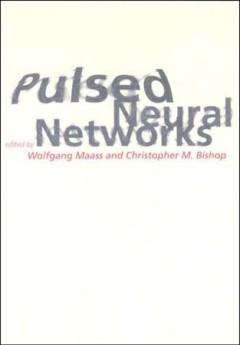Filter by

Trees of the brain, roots of the mind
"The human brain is often described as the most complex object in the universe. Tens of billions of nerve cells-tiny tree-like structures--make up a massive network with enormous computational power. In this book, Giorgio Ascoli reveals another aspect of the human brain: the stunning beauty of its cellular form. Doing so, he makes a provocative claim about the mind-brain relationship. If each n…
- Edition
- -
- ISBN/ISSN
- 9780262329026
- Collation
- 1 online resource (xiv, 232 pages) :illustrations
- Series Title
- -
- Call Number
- -

Becoming fluent :how cognitive science can help adults learn a foreign language
"Adults who want to learn a foreign language are often discouraged because they believe they cannot acquire a language as easily as children. Once they begin to learn a language, adults may be further discouraged when they find the methods used to teach children don't seem to work for them. What is an adult language learner to do? In this book, Richard Roberts and Roger Kreuz draw on insights f…
- Edition
- -
- ISBN/ISSN
- 9780262330466
- Collation
- 1 online resource (xviii, 226 pages) :illustrations
- Series Title
- -
- Call Number
- -

Public Finance and Public Policy in the New Century
Esai tentang teori dan praktik keuangan dan kebijakan publik. Enam belas esai dalam buku ini ditulis untuk merayakan ulang tahun kesembilan puluh Richard Musgrave dan untuk memperingati ulang tahun kesepuluh CES, Pusat Studi Ekonomi di Universitas Munich. Musgrave dianggap sebagai bapak pendiri ekonomi publik modern. Ia termasuk dalam tradisi intelektual yang memandang pemerintah sebagai instru…
- Edition
- -
- ISBN/ISSN
- 9780262270502
- Collation
- 1 online resource (xxx, 535 pages) :
- Series Title
- CESifo Seminar Series
- Call Number
- 336 CNO p

Pulsed Neural Networks
Sebagian besar aplikasi praktis jaringan Neural Networks didasarkan pada model komputasi yang melibatkan penyebaran variabel kontinu dari satu unit pemrosesan ke unit pemrosesan berikutnya. Dalam beberapa tahun terakhir, data dari eksperimen neurobiologis telah memperjelas bahwa jaringan saraf biologis, yang berkomunikasi melalui pulsa, menggunakan pengaturan waktu pulsa untuk mengirimkan infor…
- Edition
- -
- ISBN/ISSN
- 9780262278768
- Collation
- 1 online resource (xxix, 377 pages)
- Series Title
- -
- Call Number
- 006.32 MAA p

Roadblocks to the Socialist Modernization Path and Transition
This open access book examines how different economic systems impacted the development of East Germany and Poland. Through comparing these countries while they were centrally planned socialist economies with the periods when they transitioned to capitalism, the inability of socialist economies to modernize effectively and produce sustained economic growth is highlighted. Particular attention is…
- Edition
- -
- ISBN/ISSN
- 978-3-031-37049-6
- Collation
- XVI, 331
- Series Title
- -
- Call Number
- -

The right way to hire financial help; A Complete Guide to Choosing and Managi…
Saran terperinci dan praktis tentang cara merekrut penasihat keuangan. Mempekerjakan bantuan keuangan adalah tugas yang banyak dilakukan orang yang cerdas dengan cara yang salah, memilih untuk mengandalkan rekomendasi dari keluarga dan teman, pertemuan kebetulan, atau iklan daripada melakukan riset yang matang. Dalam prosa yang menarik dan mudah dipahami, kolumnis sindikasi nasional Charles A. …
- Edition
- Edisi 2
- ISBN/ISSN
- 9780262287845
- Collation
- -
- Series Title
- -
- Call Number
- 658.46 JAF r

The Media Systems in Europe
Stylianos Papathanassopoulos is a Professor of Media Organization and Policy at the Department of Communication and Media Studies, National and Kapodistrian University of Athens (NKUA), Greece. Between 2007 and 2011 he was the head of the faculty and member of the Board of the Hellenic Audiovisual Institute. Further, he is a Visiting Professor at City University, London, United Kingdom. Previou…
- Edition
- -
- ISBN/ISSN
- 978-3-031-32799-5
- Collation
- -
- Series Title
- -
- Call Number
- -

Modernising European Legal Education (MELE)
This open access book is a hands-on guide on doing qualitative research in parliaments, exploring achievements and drawbacks for all. From early-career scholars looking for an ‘in’ to start their research to senior academics interested in methodological details, the book offers a novel approach to discussing qualitative methodologies. It presents unique insights based on a large-scale quali…
- Edition
- -
- ISBN/ISSN
- 978-3-031-40800-7
- Collation
- -
- Series Title
- -
- Call Number
- -

Guide to Qualitative Research in Parliaments
This open access book is a hands-on guide on doing qualitative research in parliaments, exploring achievements and drawbacks for all. From early-career scholars looking for an ‘in’ to start their research to senior academics interested in methodological details, the book offers a novel approach to discussing qualitative methodologies. It presents unique insights based on a large-scale quali…
- Edition
- -
- ISBN/ISSN
- 978-3-031-32799-5
- Collation
- -
- Series Title
- -
- Call Number
- -

Tales of bohemia, taverns, and the underworld
THIS is a collection of yams from real life : yarns told on that undefined borderland known as Bohemia ; in the bars of town and country inns, and around those obscure sections of British and cosmopolitan capitals collectively and rather vaguely termed " The Underworld." They are stories retailed by men and women who lounge about to pass their leisure hours, watching life go by ; tales of famou…
- Edition
- -
- ISBN/ISSN
- 543701494
- Collation
- cdl; americana
- Series Title
- -
- Call Number
- SRLF:LAGE-3035753
 Computer Science, Information & General Works
Computer Science, Information & General Works  Philosophy & Psychology
Philosophy & Psychology  Religion
Religion  Social Sciences
Social Sciences  Language
Language  Pure Science
Pure Science  Applied Sciences
Applied Sciences  Art & Recreation
Art & Recreation  Literature
Literature  History & Geography
History & Geography